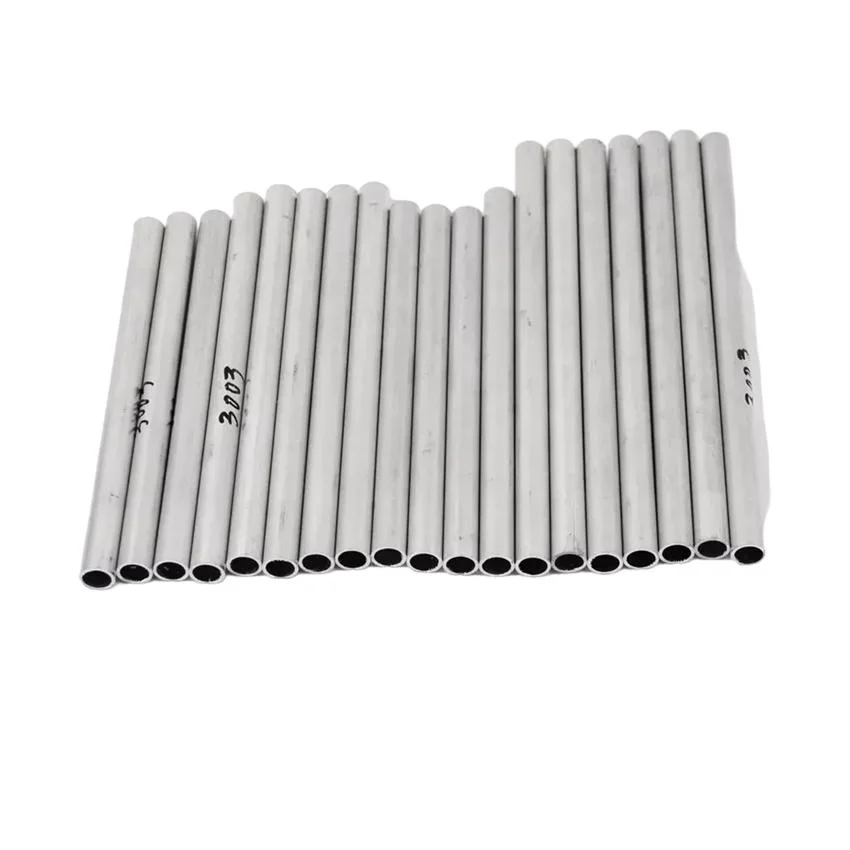Product Description


1: Brief Introduction Of 5005 Aluminium/Aluminum Alloy
Aluminium / Aluminum 5005 alloy is a non-heat treatable alloy with small amount of magnesium content. It has
excellent corrosion resistance and weldability characteristics. The following datasheet will provide more details about
Aluminium / Aluminum 5005 alloy.
Machinability
Aluminium / Aluminum 5005 alloy has poor machinability in the soft temper conditions. However, the alloy can be machined,
but is a lot tougher than many of the other aluminum alloys. The alloy in the harder tempers such as H34 and H38 can be
machined better than the alloy in the soft temper condition.
Forming:
Formability of Aluminium / Aluminum 5005 alloy, especially in the softer tempers, can be easily achieved using
conventional methods.
Welding:
Aluminium / Aluminum 5005 alloy has excellent welding capacity. Welding is possible using all the commercial methods.
Filler metal of the same alloy has to be used. Welding using resistance method of the O or annealed temper material
requires some trial and error determination.
Heat Treatment:
Aluminium / Aluminum 5005 alloy cannot be heat treated, except when annealed to minimize cold working strain.
Forging:
Aluminium / Aluminum 5005 alloy is forgeable.
Hot Working:
Aluminium / Aluminum 5005 alloy does not require hot working in most cases. But if it is required the preferable temperature
range is 371 to 204°C (700 to 400°F).
Cold Working:
Aluminium / Aluminum 5005 alloy has excellent cold working capacity including the harder tempers.
Annealing:
Annealing can be performed at 343°C (650°F) if required. This should be followed by air cooling.
Hardening:
Aluminium / Aluminum 5005 alloy can be hardened only by cold working.
Applications:
Aluminium / Aluminum 5005 alloy is widely used in the manufacture of the following products:
Small boats
Appliances
Utensils
Gas lines
Refrigerator panels
Fresh and salt water
The 5005 alloy can also used in architectural parts and as an electrical conductor. It is very useful to avoid excessive finishing
costs when using the 3003 alloys due to surface roughness while drawing

Aluminum Grades:
1000 series: 1035,1040,1050,1060,1070,1080,1090,1098,1100,1230,1435,1260,1170,1275,1285,1385
2000 series: 2001,2002,2011,2014,2023,2117,2218,2519,2024,2224,2025,2030,2031,2036,2090,2091
3000 series: 3002,3003,3004,3103,3203,3303,3105,3006,3007,3107,3008,3009,3015,3016
5000 series: 5005,5205,5006,5010,5013,5014,5016,5017,5040,5043,5050,5150,5251,5351,5451,5052,5083
5352,5552,5254,5754,5856,5456,5283
6000 series: 6101,6201,6003,6103,6105,6205,6006,6106,6110,6061,6060,6063,6863,6081,6082,6162,6863
7000 series: 7001,7003,7005,7108,7129,7146,7050,7472,7075,7076,7277,7178,7278,7091,7277
8000 series: 8001,8004,8006,8011,8111,8014,8030,8130,8177,8079,8081,8280,8091
Aluminum Temper:
O,H12,H13,H14,H16,H18,H24,H32,H34,H19,H38,G36,F,H111,H112,H192,H392,H393,H321
T1,T3,T4,T8,T72,T451,T42,T62,T5,T6,T36,T351,T651,T851,T3511,T913,T94,T7351,T89,T4510,T6510,
T8510,T8511,T4511,T52,T5511,T6511,T54,T73
The aluminum industry has created a system using a four-digit numerical designation to identify wrought aluminum
alloys. The first digit indicates the major alloying element. The second digit indicates whether there was a modification
in the basic alloy. The third and fourth digit indicates the specific alloy. The following represent the various groups:
| 1XXX | Aluminum 99% or greater |
| 2XXX | Copper - major alloying element |
| 3XXX | Manganese - major alloying element |
| 5XXX | Magnesium - major alloying element |
| 6XXX | Magnesium and silicon - major alloying elements |
| 7XXX | Zinc -major alloying element |

4:Aluminium/Aluminum Alloy Pipe Package

5: Company Introduction






